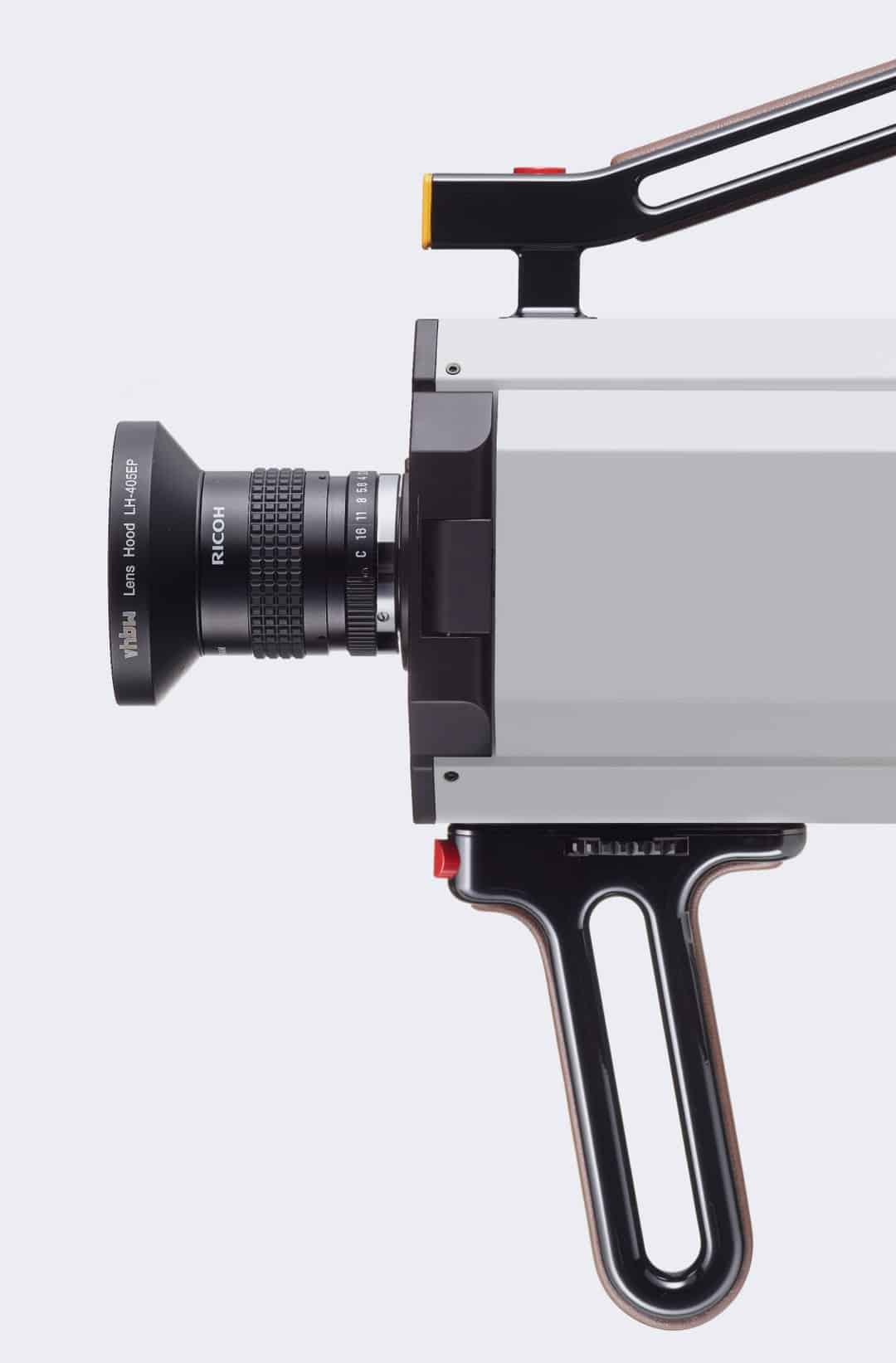Digital Analogue Camera

Just as analog formats such as vinyl records have made a comeback, so has interest in film. Our customer decided to re-introduce a new, best-of-breed Super 8 Camera to satisfy this interest. It would be the first camera produced by our customer in over 25 years. Designed by fuseproject in San Francisco, the Super 8 design was unveiled for the first time in January 2016 at CES.
The Challenge
With the initial concept, our customer and a Danish engineering firm created a primary iteration. It contained a precision clockwork-like design, including a guillotine shutter and optical assembly for through-the-lens (TTL) viewing. But it was only possible to produce additional cameras in small, hand-built quantities.
For this reason, our customer turned to PCH in May 2016, to reengineer the camera for manufacturing. Mechanical systems were re-imagined for the tolerances of a mass-production environment. A central, Linux-based processor became the brain for the variable speed motor control, capacitive touch interface and the analog and digital audio inputs and outputs. It would also support the flip out LCD and UI designed by fuseproject.
In addition, the system power requirements were stringent as the customer team pushed for the longest possible battery life. The PCH team was required to develop and thoroughly test battery budgets for each of the subsystems and the product as a whole to accommodate exposing 10-12 cartridges (around 40 minutes of consistent use) on a single battery charge. The PCH team got stellar results from the new circuit design, exceeding the goal, and granting an extra four cartridges on each charge.

The camera incorporates a number of UX considerations and refinements developed over the course of the project. A standard bezel became a smooth “dead front” to make the gorgeous LCD appear from behind a uniform sheet of polycarbonate (PC). A modern, capacitive touch wheel replaced a physical rotary encoder, a more fitting interface to the unique rotary-inspired screen experience.
Incorporating the fuseproject UI created a series of challenges for the software team. The design called for a multi-layered user interface that included a TTL feed from an onboard CMOS camera as well as a live exposure meter (which adjusts according to the film type in the camera), footage counter, battery level, audio I/O information and framing reticle for both Super 8 and Max8 film gates. Additionally, the internal camera menu system allows for a multitude of settings and customization choices.
Another mechanical advance PCH proposed was developing a unibody chassis from a single post-machined aluminum extrusion. This design, instead of folded sheet metal over a plastic internal chassis, allowed us to precisely achieve to the industrial design intent, while providing a structural chassis.
With an eye toward design for assembly (DFA) the PCH team made each of the major subsystems (film drive, handle, battery nest, pistol grip, capacitive touch, power and processor PCBs, LCD, I/O panel) capable of being assembled and tested outside of the main system. During development, this route made swapping out new subsystems for validation relatively easy.
Each of the subsystems are tied together with firmware developed at PCH. Crafting this business logic code within the same building as the electrical and mechanical architecture meant that changes could be identified and implemented rapidly.
PCH Solution
A distinct advantage of PCH is the ability to prototype and iterate quickly using the PCH Innovation Hub in San Francisco. The in-house team of machinists, mold makers, and twice-daily 3D print builds, turned weeks of waiting for parts to a matter of hours.
And, because PCH has a single, unified team composed of mechanical, electrical, firmware, manufacturing integration and testing engineers, as well as prototype fabricators, our customer saw the Super 8 come to life thoughtfully, seamlessly and quickly.
The Result
PCH was able to completely reengineer the Super 8 camera in just seven months and help identify a Bay Area manufacturing partner to produce the camera. Our customer debuted the new, working Super 8 prototype at CES 2017 to much acclaim, while PCH continued to work in the background to push the camera to the EVT stage.